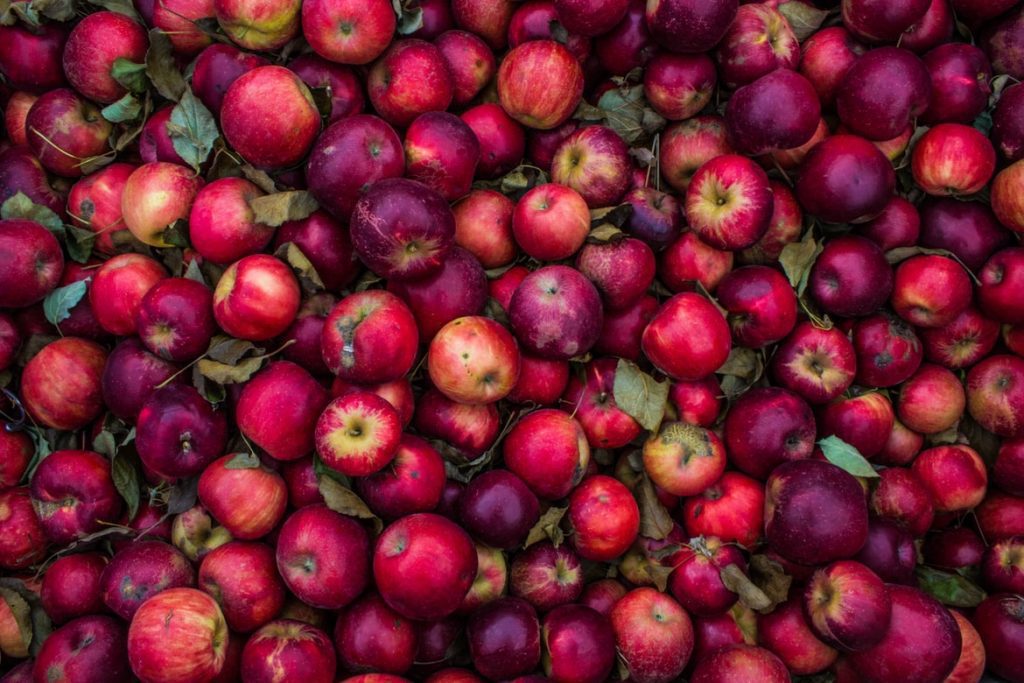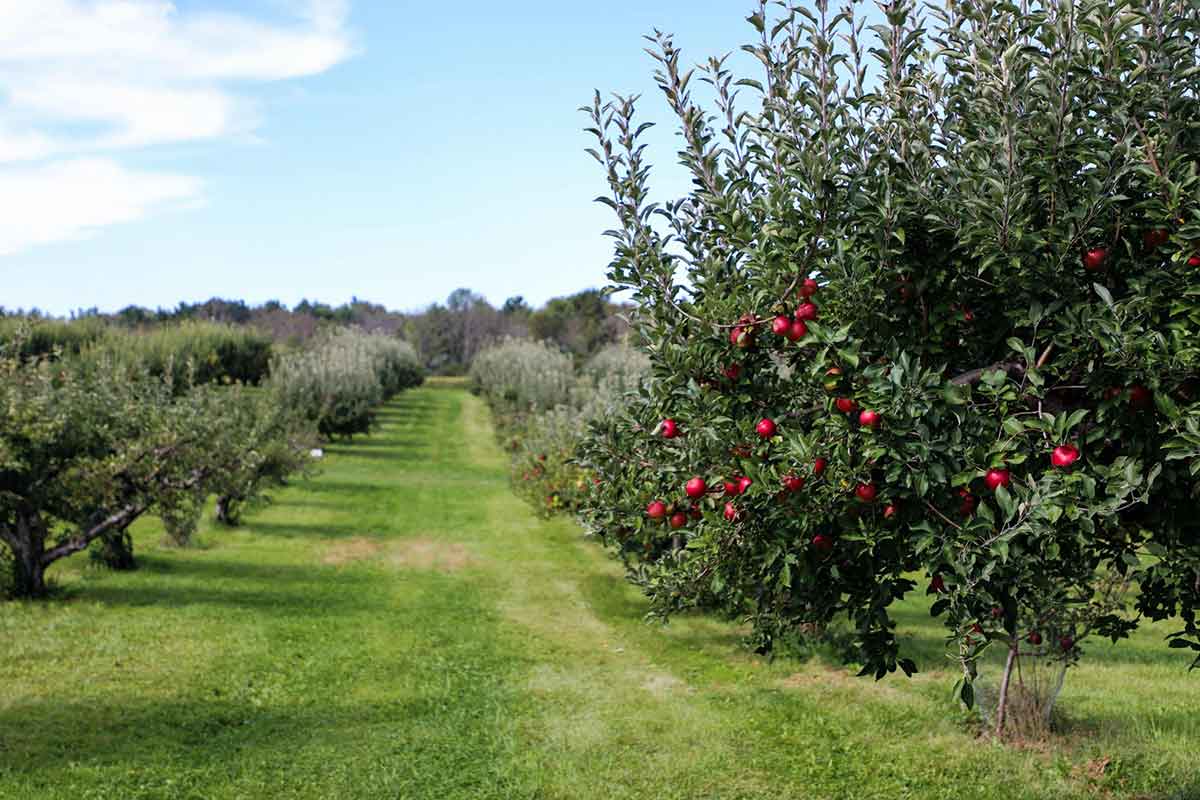The apple’s heritage is greater than any fruit on British soil. Its uses are so varied from delicious juices, purees, ciders and preserves, to crumbles and pies, or simply eaten straight off a tree. Thus they can be stockpiled to see people through the winter months. Each variety has been cultivated to enhance its different properties for different uses. Every apple variety has its own wonderful shape, texture and taste. Each has its own balance of sweetness vs acidity, with touches of citrus, honey, spice, or liquorice. Hence, as soon as we reach the end of August we think of autumn, apples and cider.
An Orchard of Variety
The apple orchard has been a quintessential scene in the British countryside for centuries. Studies show that apples were first brought to Britain by the Romans, but it was the Victorians who changed apple farming. Britain alone has developed over 2,500 varieties of apples over the years. All of these are held in the National Fruit Collection at Brogdale Farm near Faversham in Kent.
An apple tree can live for at least 100 years, and every orchard has its very own eco-system. This means they often integrate plants and wildlife such as bees and butterflies to help with pollination. Putting pigs to graze on the spoiled apples, and chickens to feast on insects in the grass helps break some of the unhealthy pest cycles whilst fertilising the soil.
British-grown apples are in abundance from September through to May. Here are a few British apple varieties to enjoy this Autumn; Cox’s Orange Pippin, Evelina, Greensleeves, Cameo, Egremont Russet, The Core Blimey, Saturn, Chivers Delight, Bramley and Spartan… And a few more; Nonpareil, Winter Pomeroy, The Harvey, Golden Pippin and Winter Pearmain.
Our apple farmers and growers are continually experimenting with new varieties. They are developing hybrids and introducing apples from across the globe. The purpose is to create and cultivate apples that are well-suited to our climate. They must also grow well with a long season, and satisfy consumer demands. It’s not a quick process, however. Trialling and testing usually takes around four years!
Apples in Abundance
Apples will store for months in the right conditions, boxed up between layers of newspaper in a cellar, shed or garage. One easy way to use up an abundance of apples is to make delicious apple cider. Cider-making is a relatively easy process that you can undertake at home or in the garden with simple equipment, a juicer and strainer:
Handle the apples gently when checking for ripeness, twist and lift the apple until horizontal, a ripe apple will come away easily in your hand. Leave bruised and windfall apples, and those with signs of rot for the surrounding wildlife to enjoy. Firstly, clean your apples, then feed them into a juicer. Apple pulp will collect in one area, whilst the juice runs from the strainer. When the last amounts are straining, add dried yeast to a jug along with a little apple juice at room temperature to begin the fermentation process. 5g of dried yeast is enough for 5 gallons of juice. Leave the jug mixture for 30 minutes and then give it a good stir before pouring it into your demijohns. Finally, fill your demijohns nearly to the top with the apple juice and attach the airlocks. Leave the juice to ferment in a warm place for 3-4 weeks.
A compact tractor with a range of attachments can make a real difference to maintaining an orchard and harvesting fruit. See our blog Equipment picks for an orchard.








